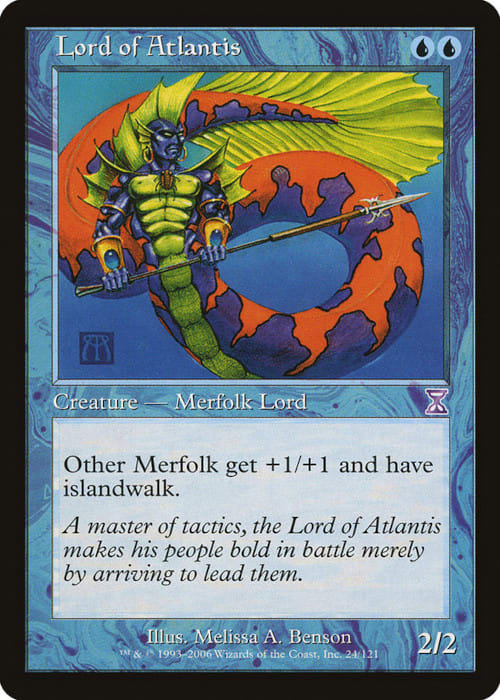Today we take a small break from my series on Cube Archetypes you should support to discuss one that you shouldn't.
Even the most competitive players in Magic: the Gathering can point to our favorite creature type. Whether you are a red mage who loves goblins, a Black mage who loves zombies, or a fellow resident of Baltimore Maryland who loves Crabs, there is a creature type for you. So why don't they translate well into a cube draft, and why is it a trap that so many cube designers fall into?
1. Typal Decks Require Density and Redundancy--Cube Doesn't Provide It
The success of typal decks in constructed formats or dedicated Limited sets hinges on density. Decks like Merfolk in Modern or Faeries in Lorwyn Block had access to a high number of synergistic cards, including efficient lords, payoffs, and enablers. However, most cubes are inherently singleton. This limitation drastically reduces the likelihood that a drafter will see enough on-type cards to support a functional deck.
To make typal archetypes viable in Cube, designers often have to include subpar cards or duplicates of the best cards which leads to the second issue.
2. Draft on Rails
Because the "lanes" for drafting are so clearly established among creature types and their prospective payoffs, the drafting process rarely requires any real decision making after the first few cards have been chosen. If I take Cemetery Reaper as my first pick and Undead Auger as my second pick, it is likely that I am going to continue to draft zombies until the draft is over or it becomes obvious that someone else is trying to draft the same theme. Cross typal cards like Putrid Goblin, and shapeshifters like Changeling Outcast can alleviate this problem but you will find that most Typal cubes are only fun to draft once, which takes away the biggest selling point, replay value, from a cube.
Okay, so what if you don't make the entire cube about typal themes but just include a few themes to round out your colors?
3. Typal Strategies Are Often Parasitic
Typal decks tend to be "parasitic" meaning, they interact mostly within themselves and not much with the rest of the Cube. A card like Merrow Reejerey is strong in a dedicated Merfolk deck, but utterly unplayable outside of it. Compare that to a card like Young Pyromancer, which supports multiple archetypes (spells-matter, tokens, sacrifice) and works well across color pairs.
Parasitic design reduces draft flexibility and makes cards unpickable for most drafters. One of Cube's greatest strengths is that it rewards adaptability and deep knowledge of Magic's overlapping synergies. Typal cards often do the opposite, pushing players down narrow paths with little room to maneuver.
4. Warped Power Curves and Forced Archetypes
To support a Typal theme, Cube designers may feel compelled to include Typal payoffs--often powerful lords or synergistic engines. Cards like Goblin Chieftain, Elvish Archdruid, or Lord of Atlantis can become explosive in the right deck and irrelevant otherwise. Their presence can distort the power curve of the Cube. Players who draft "on-tribe" get a massive payoff, while others feel punished for simply avoiding a narrow archetype.
A great cube gives its drafters the opportunity to draft a supported archetype or thread their own path and build their own. In a Typal focused cube, it is exceedingly rare that the Elf/Goblin/Zombie deck does nearly as well as its dedicated partners.
5. Typal Payoffs Age Poorly
As Magic evolves, typal cards often lag behind in power and design versatility. A Goblin deck built with Onslaught-era cards plays very differently from a modern Goblin deck leveraging Muxus or Krenko, Mob Boss. Some tribes like Elves or Humans receive consistent updates, but many do not--especially niche ones like Faeries, or Treefolk.
This can lead to a Cube environment that feels static or dated unless it is constantly revised to keep pace with newer typal cards. And since most typal payoffs are designed with Standard or Commander in mind, their power level and mana costs can feel out of place in a finely tuned Cube.
6. Typal Works Best in Themed Cubes, Not Generic Ones
To be fair, typal archetypes can work in highly thematic Cubes. One of the best themed cubes I have ever drafted was an "Innistrad Remastered" cube that took the core themes and tribes from the plane and included cards from other sets to support them. Like a typical draft environment they broke the singleton rule and allowed for some duplicates of key uncommons and cross archetype all-stars.
That being said, this cube worked for a few particular reasons.
- They playtested and tweaked this cube over the course of years. The version I played was a highly refined and tweaked version of the original concept.
- The cube included 720 cards, which meant every draft felt different and you couldn't rely on key cards showing up. Furthermore the sheer volume of cards meant that it was possible for two drafters to end up in a similar deck.
- Types were part of the draft but not the whole draft. If I drafted a Black deck I didn't feel obligated to be a zombie deck. My deck usually contained some level of generically good zombies like Murderous Rider but I didn't feel inclined to draft cards like Cemetery Reaper when I wanted to draft Doom Blade.
Conclusion
Typal archetypes may have their charm, but they're more trouble than they're worth in a singleton environment, and their replay value is significantly lower than your average cube. By focusing on broader, more synergistic themes, Cube designers can create a deeper, more resilient draft environment--one that encourages creativity, rewards skillful drafting, and avoids the pitfalls of typal traps.
Check out the other articles in this series here: The Comprehensive Guide to Cube Archetypes




























